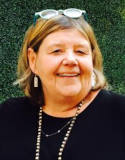Wine Review: Paul Nicolle Chablis “Les Fourneaux” (France)

WHAT’S THE DIFFERENCE BETWEEN CHABLIS AND CHARDONNAY?
WINE REVIEW: PAUL NICOLLE CHABLIS PREMIER CRU “LES FOURNEAUX” (BURGUNDY-FRANCE)
Time to (hopefully) clear up some confusion.
If you’re of a certain age and grew up in the 1970s, you probably remember jugs of “Chablis.” Remember the curvy glass handle? In the United States, the most popular wine brands were Gallo, Paul Masson, and Carlo Rossi. Inside my home, giant green-bottle jugs of Gallo were always on the kitchen countertop (thanks, Mom!). Before wine drinking became such a popular pastime accessible to everyone and all budgets, people often used the terms “Chablis, Cabernet, and Rose” interchangeably when referring to “White, Red, and Rose.” When you sat down in a restaurant, ordering a glass of “Chablis” was common. That’s when our confusion about wine started.
Unfortunately, things haven’t cleared up much in the last four decades. Take the fact that Chablis is actually 100 percent Chardonnay. In France, no other grape is allowed in the four Chablis Appellation d’Origine Contrôlée (AOC). Sometimes, these wines are also called “White Burgundy.” Accordingly, some people may ask — why not just call the wine “Chardonnay?” Wouldn’t that make more sense? Confused yet?
Here’s a (partial) explanation. Chablis actually refers to the region (it’s actually a town). Chablis is located in the Chardonnay-producing region in the northwest corner of Burgundy, a province in France. What sets Chablis wine apart from traditionally-made Chardonnay wine is the actual winemaking technique. Chablis rarely uses any oak-barrel aging, which is so common with Chards. Instead, it’s processed and stored in stainless steel, to protect purity. This is why Chablis is always lighter in color, as opposed to Chards, which often become golden in color as they absorb the properties of the oak, resulting in a very different style and taste. Accordingly, Chablis tends to be far more refreshing, compared to the denser and heavier Chardonnay. So, if a lighter white wine with a zesty citrus taste tempts you, then go for a Chablis — (but please — do pass on the Gallo). Should you prefer the toasty flavor of something more robust, then pick an oaked Chardonnay.
One more thing: French laws are very strict, which is what makes their wines the best in the world. Take labeling, for example. The demarcation “Grand Cru” can only be used if 100 percent of the grapes used are from Grand Cru villages. A bottle stamped “Premier Cru” must be 100 percent Premier Cru, or a mix of both Grand and Premier. Most wine drinkers, including myself, won’t know the difference in quality because both are usually outstanding. However, the “Grand Cru” allows the winemaker to boost the price a bit since the perception is that Cru’s are superior (which is technically true). Put another way, I like to think of Premier Cru as “business class” while perhaps Grand Cru is “first class,” which isn’t much of a difference.
That’s a long-winded, but fun-to-write introduction to Paul Nicolle Chablis Premier Cru “Les Fourneaux” 1er. This is a pricey superstar from Burgundy, which is beautifully packaged in the classic Burgundy style. But what I liked most about the Paul Nicolle was the taste: Intensely fresh, with clear notes of citrus, but not at all too tart. Lingering pleasantness with a clean finish.
The price point is spot on for a Premier Cru. This is a pleasant wine for those who want to step up in class (and price) a bit and fly first-class instead of economy. It won’t break the bank. This is as fine a Chablis as you’ll find in this range, likely to be enjoyed across a broad spectrum of wine preferences and experiences.
Grading the 2019 Paul Nicolle Chablis Premier Cru “Les Fourneaux” 1 er:
Price: $40
Alc. Content: 14 pct.
Presentation: 8/10
Taste: 7.5/10
Originality: 6/10
Value: 5/10
Overall Grade: 7/10
Note: Thanks to Bruce Frank for making this review possible. Bruce orders wine regularly and wanted to share the experience, so he sent me nearly identical duplicates. This unreciprocated generosity gives me a unique chance to try new wines and sample winemakers I wouldn’t normally pay for on my own. Thanks to Bruce for this wonderful gift of knowledge….and the gift of wine!
Read previous reviews in this series:
Weinhofmeisterei Mathias Hirtzberger Gruner Veltner Treau Federspiel (Austria)









